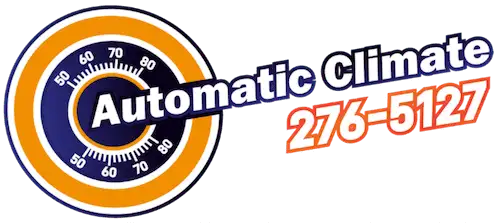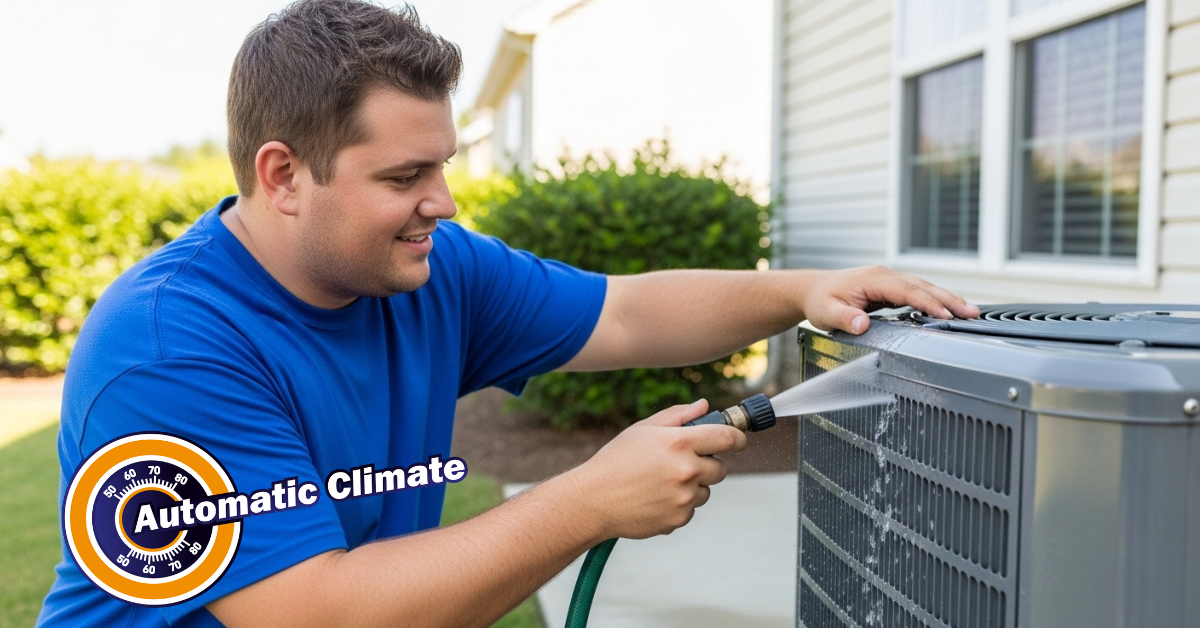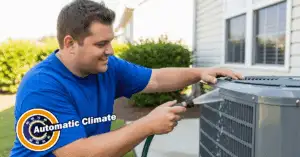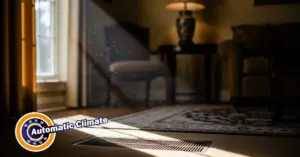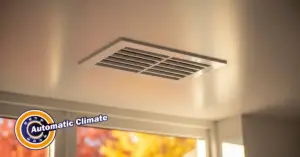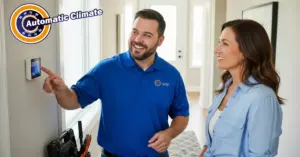The Professional Air Duct Cleaning Process: What to Expect Step-by-Step
Written by Cole Summers at Automatic Climate in Richmond, Virginia.
Breathing Easy: Why Your Home’s Air Ducts Matter More Than You Think
Have you ever stopped to think about the air you’re breathing inside your own home? We spend so much time cleaning surfaces we can see—countertops, floors, windows—but what about the pathways that deliver the very air we live in? Your home’s HVAC system has an intricate network of air ducts, a respiratory system for your house, and just like our own lungs, they work best when they’re clean. The professional air duct cleaning process is one of those home maintenance tasks that often gets overlooked, but its impact on your home’s air quality and your family’s health can be profound. Many people don’t even know what the process of professional air duct cleaning entails. They might worry its too invasive or complicated, but the reality is much simpler.
Think about it. Every day, your HVAC system pulls in air, heats or cools it, and then pushes it back out through the ductwork. Along with that air comes dust, pet dander, pollen, and all sorts of microscopic particles. Over years, this stuff builds up, creating a layer of grime inside your ducts. This isn’t just about being “dirty”; it’s about what that buildup can mean for your health and your HVAC system’s efficiency. A complete professional air duct cleaning process can remove years of accumulated contaminants, leaving you with fresher, cleaner air. At Automatic Climate, serving the Richmond, VA area since 1983, we’ve seen firsthand what a difference it makes. Understanding the full professional air duct cleaning process helps homeowners feel confident in their decision to invest in their home’s health. It’s not just cleaning; its a restoration of your home’s air quality.
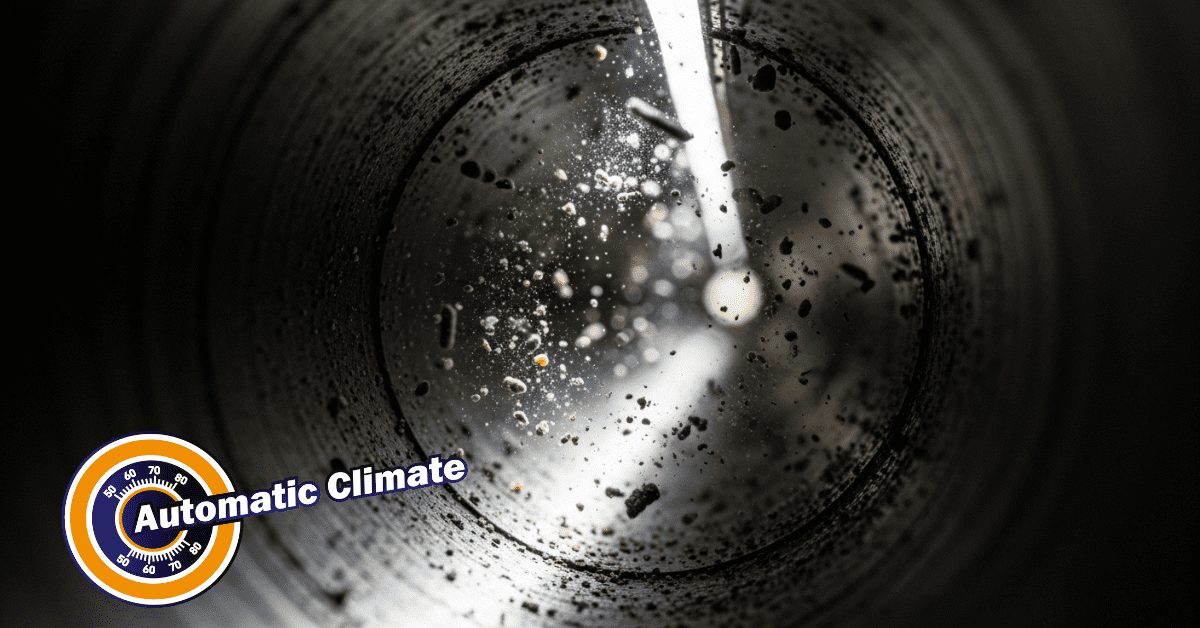
“The objective of cleaning is not just to clean, but to feel happiness living within that environment.” – Marie Kondo
So, what exactly happens when you call in the pros? What does the step-by-step professional air duct cleaning process look like? We’re going to pull back the curtain and walk you through everything, from the initial inspection to the final handshake. We’ll explore the tools, the techniques, and the tell-tale signs that your ducts are crying out for attention. This isn’t just a simple vacuuming job; a proper professional air duct cleaning process is a meticulous and thorough service that can improve your system’s performance and potentially lower your energy bills. For many homeowners in Richmond, VA, understanding this procedure is the first step toward a healthier home environment. Let’s dive in and demystify the professional air duct cleaning process together.
The Unseen Enemy: What’s Hiding in Your Ductwork?
Before we detail the professional air duct cleaning process itself, let’s talk about what we’re fighting against. The list of potential inhabitants in your air ducts can sound a little scary, but it’s better to be informed. Over time, your ducts can become a collection point for:
Dust and Dust Mites: The most common culprits. A single speck of dust can contain pet dander, dead skin cells, and fabric fibers.
Pollen and Allergens: Outdoor allergens can easily get sucked into your HVAC system and then circulated endlessly throughout your home.
Mold and Mildew: If there’s any moisture in your system, it can become a breeding ground for mold, which can release spores into your air.
Pet Dander: If you have furry friends, their dander is definitely in your ducts, which can be a major irritant for people with allergies.
Construction Debris: In newer homes or after a renovation, drywall dust, sawdust, and other debris can be left behind in the ductwork.
This cocktail of contaminants gets blown around your home every time your system kicks on. For people with asthma, allergies, or other respiratory issues, this can be a real problem. A well-executed professional air duct cleaning process is the most effective way to remove these pollutants at their source. It’s a foundational step towards improving your indoor air quality, a topic the Environmental Protection Agency (EPA) takes very seriously. They note that indoor air can often be more polluted than outdoor air, which is why managing sources of indoor pollution, like dirty ducts, is so critical. The goal of the professional air duct cleaning process is to eliminate these hidden threats.

Is It Time? Key Signs Your Air Ducts Need Cleaning
💨
Visible Dust
You see puffs of dust coming from your vents when the HVAC system turns on.
🤧
Increased Allergies
Family members are experiencing worse-than-usual allergy symptoms or respiratory irritation inside.
👃
Musty Odors
A persistent stale or musty smell comes from the vents whenever the air is running.
🕷️
Signs of Pests
You’ve found evidence of insects or rodents in your home, as they often nest in ductwork.
🏠
Recent Renovation
Significant construction or remodeling projects create a lot of dust that settles in ducts.
The Main Event: A Detailed Walkthrough of the Professional Air Duct Cleaning Process
Alright, the time has come. You’ve made the call, and the technicians are on their way. What happens next? A true professional air duct cleaning process is systematic and thorough. While specific techniques can vary slightly, any reputable company, especially one certified by the National Air Duct Cleaners Association (NADCA), will follow a similar set of core steps. This isn’t a 30-minute job; expect it to take a few hours for a typical home. Let’s break down the professional air duct cleaning process from start to finish.
Step 1: Arrival and Pre-Service Inspection
The professional air duct cleaning process begins the moment the team arrives. They won’t just start hooking up hoses. First, the lead technician should walk through your home with you. This is your chance to point out any areas of concern, like rooms that seem dustier or have odd smells.
During this inspection, the technicians will:
Assess Your System: They’ll locate all your vents (both supply and return), inspect the furnace and air handler, and get a general idea of your home’s ductwork layout.
Check for Potential Issues: They’ll look for any pre-existing problems, like disconnected ducts, asbestos-containing materials (in much older homes), or other issues that might complicate the cleaning. A true professional air duct cleaning process includes this diligence.
Explain the Process: The crew chief will explain exactly what they are going to do, how they’ll do it, and answer any questions you have. Transparency is a key part of a good professional air duct cleaning process. There should be no surprises.
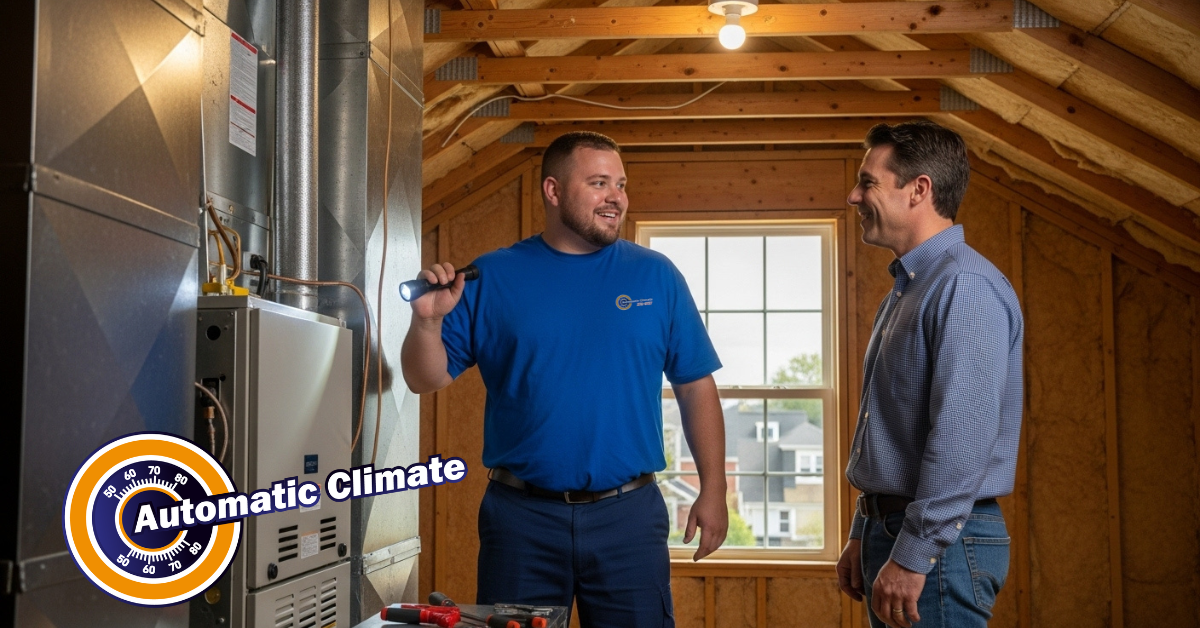
Step 2: Protecting Your Home
Before any equipment is turned on, the team will prepare your home to ensure it stays clean and undamaged. This includes laying down drop cloths on your floors, especially in areas where they’ll be working and bringing in equipment. They’ll also use protective corner guards to prevent hoses from scuffing your walls and furniture. This meticulous preparation is a hallmark of a high-quality professional air duct cleaning process. They respect your home as if it were their own. It’s a small detail that makes a big difference. Some people forget that the professional air duct cleaning process should leave your house cleaner, not create a new mess.
Step 3: Creating Negative Pressure
This is where the magic really begins. The team will connect a very large, powerful vacuum collection system to your main ductwork, usually near the furnace or air handler. This vacuum is so powerful that it creates what’s called “negative pressure” throughout your entire duct system. You can read more about the equipment used in articles from sources like This Old House.
Why is this so important? When the system is under negative pressure, all the dust and debris that gets loosened inside the ducts will be sucked directly into the containment unit, rather than being blown out into your home. It’s the foundation of a safe and effective professional air duct cleaning process. Without this step, you’d just be stirring up dust and making the problem worse. This single step is arguably the most critical part of the entire professional air duct cleaning process.
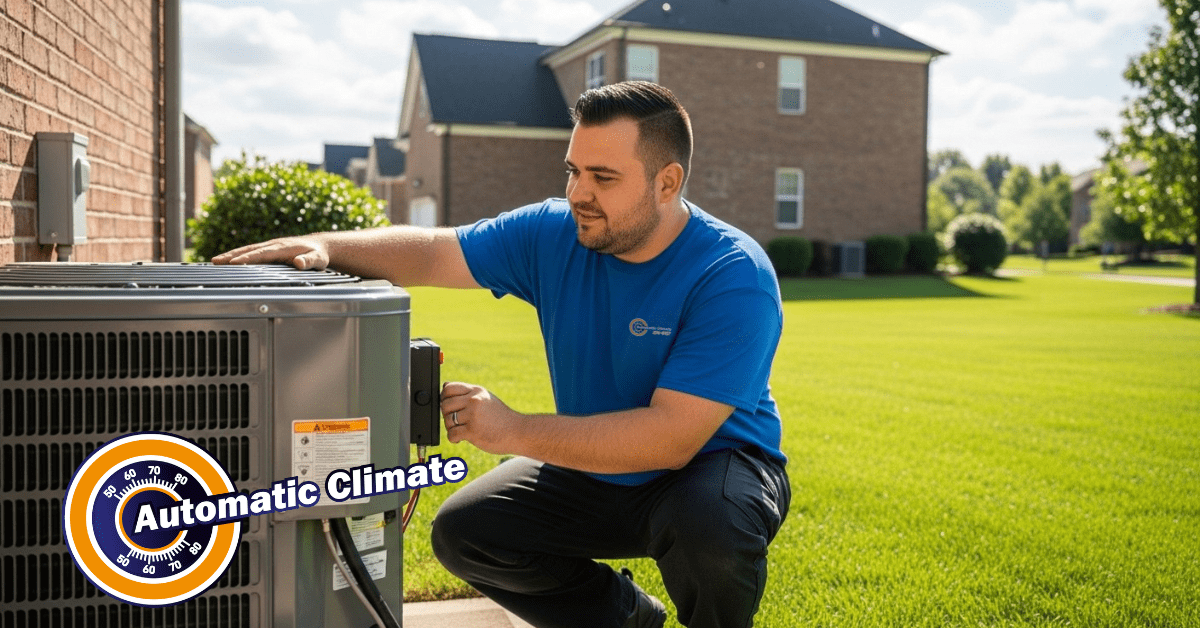
Step 4: Agitating and Cleaning the Ducts
With the negative pressure system running, the technicians will go to each vent in your home. They’ll seal off all the vents except the one they are working on to maximize suction in that specific duct run.
Then, they use various agitation tools that are inserted into the ducts to dislodge the caked-on dust and debris. These tools can include:
Rotating Brushes: Specially designed brushes that spin to scrub the inside walls of the ductwork.
High-Powered Air Whips: Tools that shoot compressed air in multiple directions to knock debris loose.
Skipper Balls: An air nozzle that directs compressed air in a 360-degree pattern to clean all sides of the duct.
As these tools knock everything loose, the powerful negative pressure vacuum immediately pulls it out of the ducts and into the collection unit outside. This is done for every single supply and return duct run in your home, ensuring the entire system is cleaned. This part of the professional air duct cleaning process is the most active and takes the most time. It’s a methodical, vent-by-vent procedure. The thoroughness here defines the quality of the professional air duct cleaning process. For many, preparing your home for the season starts with a clean slate, and this step provides it.
“An ounce of prevention is worth a pound of cure.” – Benjamin Franklin
Step 5: Cleaning the HVAC Unit Components
A truly professional air duct cleaning process doesn’t stop at the ducts. The technicians should also clean various components of your HVAC unit, because a clean system works more efficiently. This typically includes:
The Blower Motor and Housing: This is the fan that pushes the air through the ducts. A buildup of dust here can reduce efficiency and even cause the motor to burn out prematurely.
The Evaporator Coil: This part of your air conditioner can get very dirty, which restricts airflow and cooling capacity.
The Drain Pan: Cleaning the condensation drain pan prevents clogs and water damage.
Skipping this step would be like washing your car but leaving the tires dirty. It’s an integral part of a complete professional air duct cleaning process that ensures the whole system is in top shape. Any company that doesn’t include this isn’t giving you the full professional air duct cleaning process you’re paying for.
Keep It Clean: HVAC Maintenance Tips
Change Filters Regularly
This is the single most important task. Check your filter monthly and replace it every 1-3 months, depending on the type and your home’s conditions (pets, smokers, etc.).
Keep Vents Clear
Ensure furniture, rugs, or drapes aren’t blocking your supply and return vents. Good airflow is crucial for efficiency and preventing strain on your system.
Clean Around Outdoor Unit
Keep the area around your outdoor condenser unit clear of leaves, grass clippings, and debris. A 2-foot clearance is recommended for proper airflow.
Schedule Professional Tune-Ups
Have a licensed HVAC technician, like the team at Automatic Climate, perform a professional tune-up annually for both your heating and cooling systems.
Sources: Family Handyman, Good Housekeeping.
Step 6: Final System Check and Clean-Up
Once everything is cleaned, the team will put it all back together. They’ll seal the access hole in your main ductwork with a metal access panel, ensuring it’s airtight. They’ll put all the vent covers back on and test the system to make sure everything is running correctly. This is the final verification of the professional air duct cleaning process.
Finally, they’ll clean up their work area, remove the drop cloths, and do a final walkthrough with you to show you the work they’ve done. A reputable company might even show you before-and-after pictures taken inside your ducts. The completion of the professional air duct cleaning process should leave you with nothing but clean air and peace of mind. Every detail of this professional air duct cleaning process matters.
After the Cleaning: What to Expect and How to Choose a Pro
So the truck has driven away and your professional air duct cleaning process is complete. What now? The first thing many homeowners notice is a cleaner smell in the air. The musty, stale odor that might have been lingering is often gone. You might also notice less dust accumulating on your furniture, which means less time you have to spend cleaning! For those with allergies, the reduction in airborne irritants can bring noticeable relief.
It’s crucial to choose the right company to perform your professional air duct cleaning process. A shoddy job can be worse than no job at all. Look for a company that is NADCA certified. This means they adhere to the highest industry standards and ethics. Ask them to walk you through their specific professional air duct cleaning process; they should be able to explain it clearly, just as we’ve done here. At Automatic Climate, our team is proud to follow these rigorous standards. Since 1983, we’ve believed in doing the job right, and our approach to the professional air duct cleaning process reflects that commitment.
Beware of scams. If a company offers a “whole house cleaning” for an unbelievably low price, be very skeptical. A proper professional air duct cleaning process takes several hours and requires expensive, specialized equipment. Those low-ball offers are often bait-and-switch tactics, where they get in the door and then try to upsell you on essential services that should have been included in the first place. As publications like Bob Vila warn, these scams are unfortunately common. A proper professional air duct cleaning process has a fair market value for the labor and technology involved.
Ready for Cleaner Air?
Trust Automatic Climate for a thorough, NADCA-certified professional air duct cleaning process in Richmond, VA. Experience the difference since 1983.
Case Study: The Davis Family in Midlothian, VA
Problem: The Davis family noticed their son’s allergies were significantly worse inside their home. They also dealt with constant dust and a faint musty smell from the vents.
Process: The Automatic Climate team performed our full professional air duct cleaning process. An initial camera inspection revealed heavy buildup of dust and pet dander from their two golden retrievers.
Result: Within a week, Mrs. Davis reported a dramatic reduction in dust on surfaces and, most importantly, their son was breathing easier with fewer allergy flare-ups. The musty odor was completely gone. They were thrilled with the results of the professional air duct cleaning process.
Sources: Angi, HomeAdvisor.
Your home’s air quality is too important to leave to chance. By understanding what a real professional air duct cleaning process involves, you can make an informed decision and choose a contractor who will do the job right. It’s an investment in your property and, more importantly, in your family’s health and comfort. We hope our comprehensive guide has been helpful. Remember that the best professional air duct cleaning process is one that is transparent, thorough, and tailored to your home’s specific needs. We’ve seen thousands of homes benefit from a professional air duct cleaning process, and the feedback is consistently positive.
When considering a professional air duct cleaning process, think of it as a deep clean for your home’s respiratory system. Just as you’d visit a doctor for a check-up, your HVAC system needs periodic care from experts who understand its complexities. The entire professional air duct cleaning process is designed to be as non-intrusive as possible while delivering maximum results. From protecting your floors to cleaning up afterward, every step is handled with care. If you are ever unsure, just ask the technician to explain their professional air duct cleaning process in more detail. A true pro will be happy to. And remember, fall is a great time for duct cleaning to prepare your system for the winter heating season. This professional air duct cleaning process will set you up for success. Knowing what our step-by-step guide covers can make the whole experience smooth and predictable.
Frequently Asked Questions
1. How often should I have my air ducts cleaned?
NADCA recommends having your ducts inspected every few years, with a full cleaning performed on an as-needed basis, typically every 3 to 5 years. However, you may need it sooner if you have pets, smokers, or family members with allergies, or after a home renovation.
2. How long does the professional air duct cleaning process take?
For an average-sized home (around 2,000 sq. ft.), the process typically takes between 2 to 4 hours. Larger homes or systems with more complex ductwork may take longer.
3. Will duct cleaning reduce my energy bills?
It can. When your ducts and HVAC components are clogged with debris, your system has to work harder to move air, using more energy. A clean system is an efficient system, which can lead to lower energy consumption according to the Department of Energy.
4. Is the process messy?
No. A key part of the professional air duct cleaning process is the use of a negative pressure system. This ensures all loosened dust and debris is sucked directly into a containment unit, preventing it from entering your home. Professionals also use drop cloths and other protective gear.
5. Do I need to leave my home during the cleaning?
It’s not necessary to leave, but be aware there will be some noise from the equipment. The technicians will need clear access to all the vents in your home.
6. What is NADCA?
NADCA stands for the National Air Duct Cleaners Association. It’s the leading industry organization that sets the standards for HVAC system cleaning. Hiring a NADCA-certified company ensures you’re getting a contractor with proper training and equipment.
7. Are chemical biocides or sanitizers necessary?
Generally, no. The EPA recommends that chemical treatments should only be considered if there is a specific, identified problem like a mold infestation, and only after the system has been thoroughly cleaned of all visible debris. Mechanical cleaning is the core of the process.
8. Can cleaning damage my ductwork?
If done by an untrained individual or a scam company, yes. However, a certified professional uses the correct equipment and techniques that will not harm your ducts. They will also identify and alert you to any pre-existing damage.
9. What about flexible ducts versus metal ducts?
A professional company has tools and techniques to safely clean both types. They use softer brushes and different agitation methods for flexible ducts to avoid tearing or damaging them.
10. Does the professional air duct cleaning process help with bad smells?
Absolutely. By removing odor-trapping particles like mold, mildew, pet dander, and cigarette smoke residue, duct cleaning can significantly improve or eliminate persistent odors in the home.
11. I have a brand new home, do I need this service?
It’s a good idea. Construction debris like drywall dust and sawdust is very common in the ductwork of new homes. Starting with a clean system is ideal.
12. What’s the difference between a supply and return vent?
Supply vents blow conditioned (heated or cooled) air into a room. Return vents suck air out of the room and send it back to the HVAC unit to be re-conditioned. Both need to be cleaned.
13. Will I see a difference in airflow?
If your ducts were heavily clogged, you might notice improved airflow to certain rooms that previously felt stuffy or were hard to heat or cool.
14. My house is always dusty, will this fix it?
It will certainly help! Since ducts can circulate dust around the house, cleaning them removes a major source. However, dust also comes from other sources (windows, people, pets), but you should see a noticeable reduction.
15. Do you clean inside the furnace?
Yes, a complete professional air duct cleaning process includes cleaning key components of the air handler/furnace, such as the blower motor and housing.
16. Why can’t I just vacuum the vents myself?
A household vacuum can only clean the first few inches inside the vent. It lacks the power to dislodge caked-on debris and doesn’t create the negative pressure needed to prevent contaminants from spreading through your home.
17. Will this service get rid of mold?
The cleaning process removes visible mold growth from within the ducts. However, if you have a significant mold problem, the source of the moisture that caused it must be addressed to prevent it from returning.
18. What kind of vacuum system is used?
Professionals use either a very powerful truck-mounted vacuum or a potent portable unit. Both are designed to create strong negative pressure and are equipped with HEPA filters to ensure contaminants are captured.
19. Is there anything I should do to prepare?
Simply ensure there is a clear path to your furnace/air handler and to all the vents in your home. Moving furniture that might be blocking a vent is very helpful.
20. How do I know if the job was done right?
A good contractor will do a final walkthrough with you, show you their work, and provide before-and-after photos if possible. Your vents and registers should be clean, and the system should run normally. And, of course, your air should feel fresher.
Sources: U.S. EPA, Better Homes & Gardens.
Further Reading & External Resources
#AirDuctCleaning #ProfessionalAirDuctCleaningProcess #IndoorAirQuality #HVACMaintenance #HealthyHome #CleanAir #RichmondVA #HomeMaintenance #AutomaticClimate
Legal Disclaimer:
This article was drafted with the assistance of a Large Language Model, specifically Gemini, which was used for initial drafting and article outlining. The content was subsequently reviewed, edited, and fact-checked by a human writer to ensure accuracy, clarity, and adherence to editorial standards. While AI assists in the creation of this content, the human author(s) retain editorial control and full responsibility for the final content, including its accuracy and integrity. Readers should be aware that AI-generated content may present limitations, and the information provided should be considered with this in mind.
The information provided in this article is for general informational purposes only. While we strive to keep the information up-to-date and correct, we make no representations or warranties of any kind, express or implied, about the completeness, accuracy, reliability, suitability, or availability with respect to the 1 article or the information, products, services, or related graphics contained in the article for any purpose. Any reliance you place on such information is therefore strictly at your own risk. 2 HVAC systems involve electrical components, refrigerant, and potentially natural gas; attempting repairs without proper training and safety precautions can result in injury, property damage, or voiding warranties. Always consult with a qualified and licensed HVAC professional, like those at Automatic Climate (https://www.automaticclimate.com/, (804) 803-1983), for diagnosis and repair of HVAC issues.
